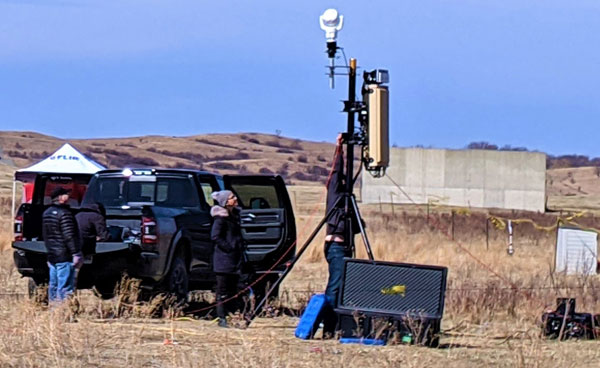
The terrain along our northern border with Canada is vast and unique, and features a diverse array of geographical landscapes including the grasslands, prairies, and lowland plains of North Dakota and the mountains and badlands of Montana.
Safeguarding and securing the northern border against threats and illegal activities, such as human trafficking and smuggling of illicit drugs, presents unique challenges because of its various distinct landscapes and multiple points of entry into the country.
Protecting such a wide stretch of terrain —and the airspace above it— is imperative to our homeland security and a top priority for those sworn to keep our borders secure.
The Department of Homeland Security (DHS) Science and Technology Directorate (S&T) and its National Urban Security Technology Laboratory (NUSTL) have been working with a coalition of partners (including U.S. Customs and Border Protection, U.S. Coast Guard, the Department of Defense, the Federal Aviation Administration, and industry) for more than a year on Air Domain Awareness (ADA) efforts, culminating with a series of technology demonstrations that kicked off in April 2021.
Hosted at select sites near the border, the tests and technology demonstrations are designed to evaluate cutting-edge radar systems, cameras (both infrared and electro-optical), radio frequency detection systems, and acoustic devices to determine how effectively each can monitor, safeguard, and secure our northern border and its surrounding terrains and airspace.
The first event took place over three weeks this spring at Camp Grafton in North Dakota. The photos below offer an exclusive look at the tests, the technologies, and the terrain in this beautiful slice of our northern border.

Early morning view of the prairies and rolling hills surrounding Camp Grafton, North Dakota. S&T and its partners spent long days conducting over 100 flights and technology assessments over the course of the testing. Held at random times of the day and night in different weather and environmental conditions, these assessments allowed them to evaluate whether the specialized systems could quickly and accurately detect, track, and identify various types of low, slow-flying aircraft—both manned and unmanned.
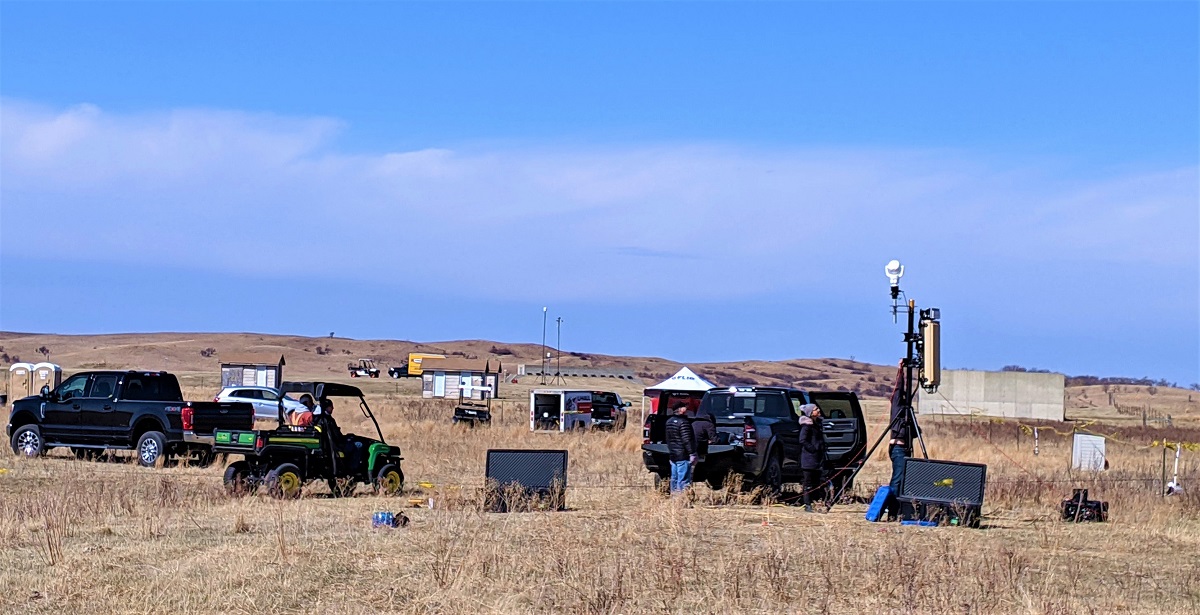
Twelve participating vendors from the aerospace and defense industries set up specialized aerial surveillance systems for field testing at Camp Grafton. “We’ve been able to team with FAA, DOD, and other partners to test, evaluate, and implement state-of-the-art air domain awareness technologies to increase our security and ensure our safety,” said S&T Technical Lead Tim Bennett. “This whole-of-government effort helps us accelerate getting products out in the field and saves dollars because we’re doing it as a team.”
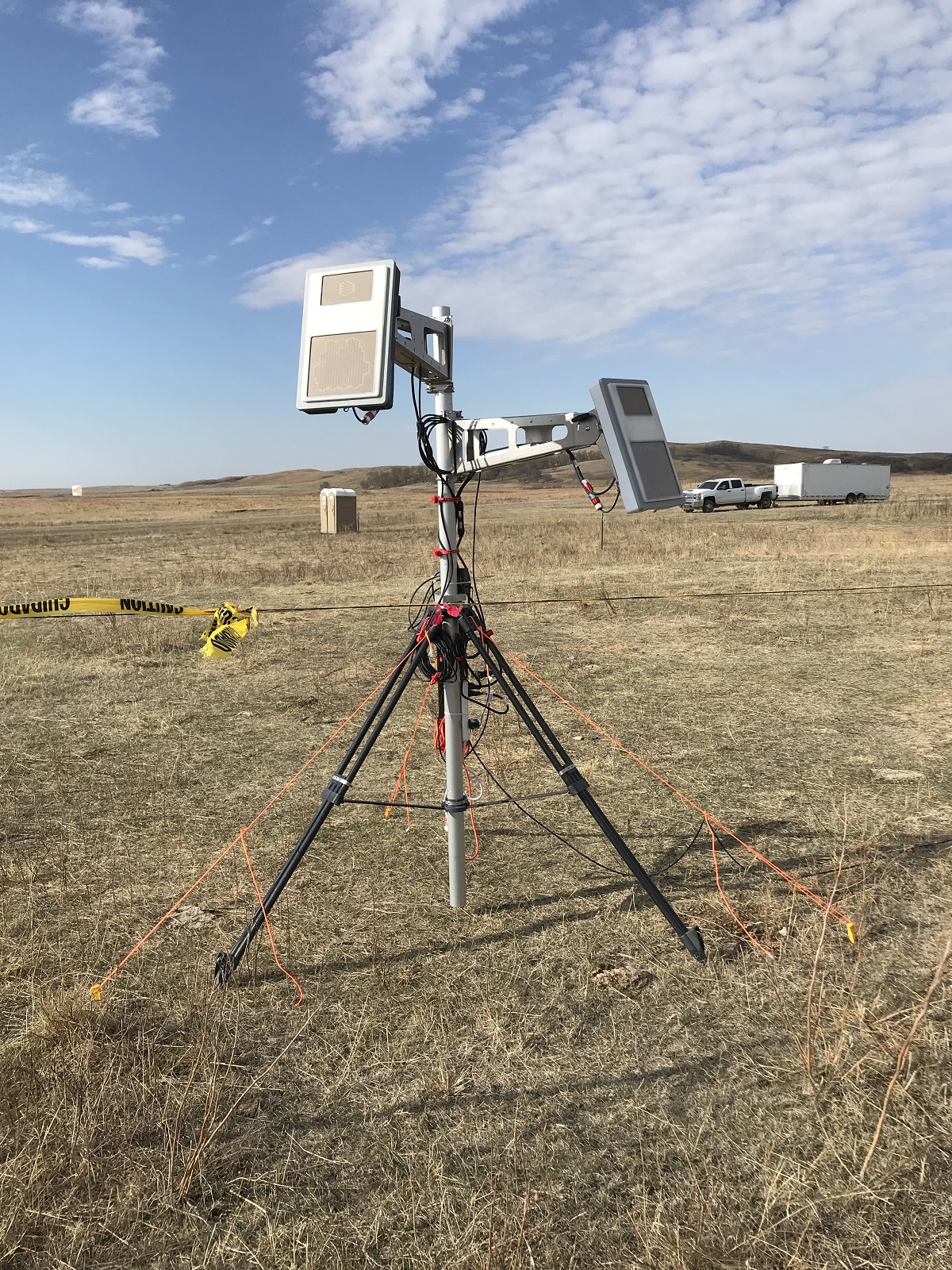
A Fortem Technologies, Inc., radar system, one of several types of technologies tested at Camp Grafton for its ability to detect, track and identify aerial-based threats. North Dakota’s vast landscape and airspace make it susceptible to drug smuggling via manned and unmanned aircraft. S&T tested various radar systems to gauge their effectiveness at early detection and tracking of both manned and unmanned aircraft flying near the border.

Pilots fly a Sentera, Inc., PHX unmanned aerial system (UAS) below the rolling hills to test capabilities of the systems and operators to ensure that both would be able to detect UAS, even when flying close to the ground.
“I think we had some sensors out there that did a pretty good job,” said NUSTL engineer Teddy Damour. “We’ll keep at it and continue to put the systems through some rigorous operational scenarios.”
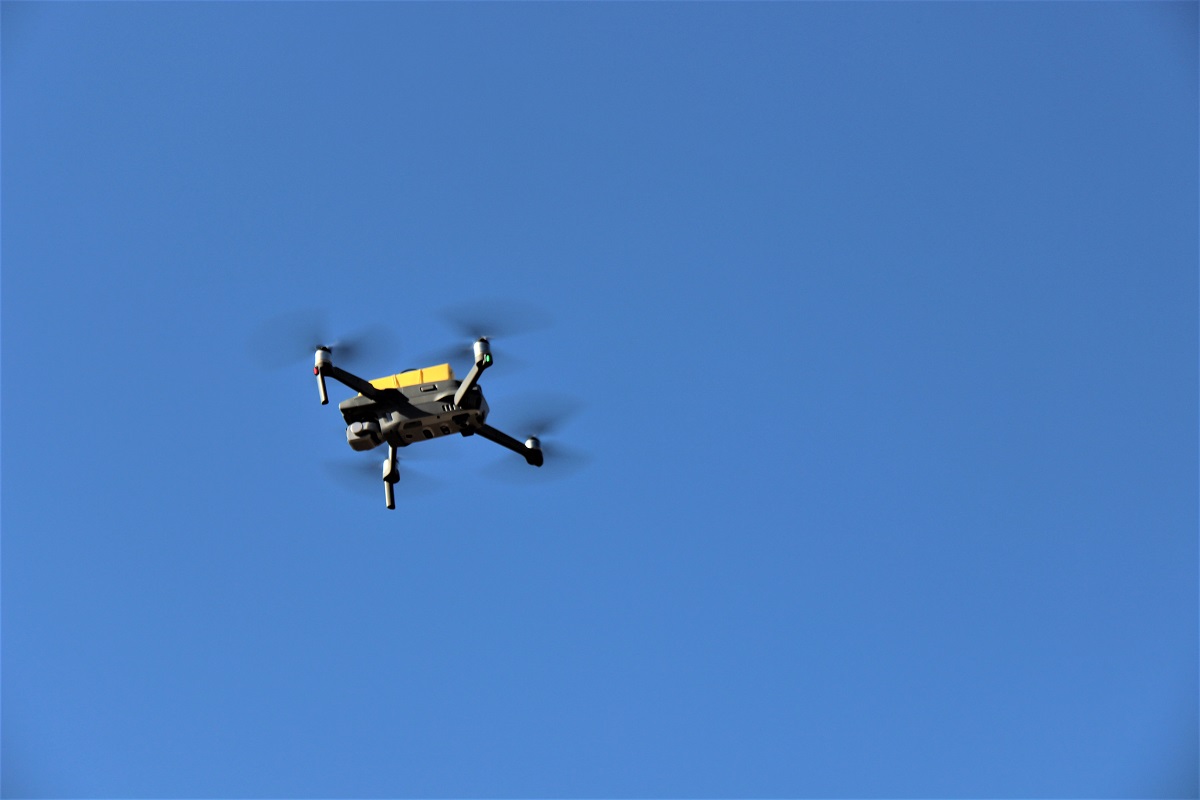
Pilots fly a DJI Mavic 2 UAS to see if it can be detected by the equipment being tested. A GPS tracker on top (inside the yellow box) ensured that both the pilots and system operators could keep track of the drone’s location throughout its flight. Once the test flight was over, both the pilots and system operators compared the tracking data to the surveillance system’s data to determine how accurately the surveillance system performed in real time.
The aerial surveillance technologies that DHS eventually employs at the northern border will need to be able to detect everything that travels through this airspace. The rigorous testing conducted at Camp Grafton will help S&T to determine which of these tools will be suitable for preventing and responding to illegal activities at these crucial points-of-entry into the country.
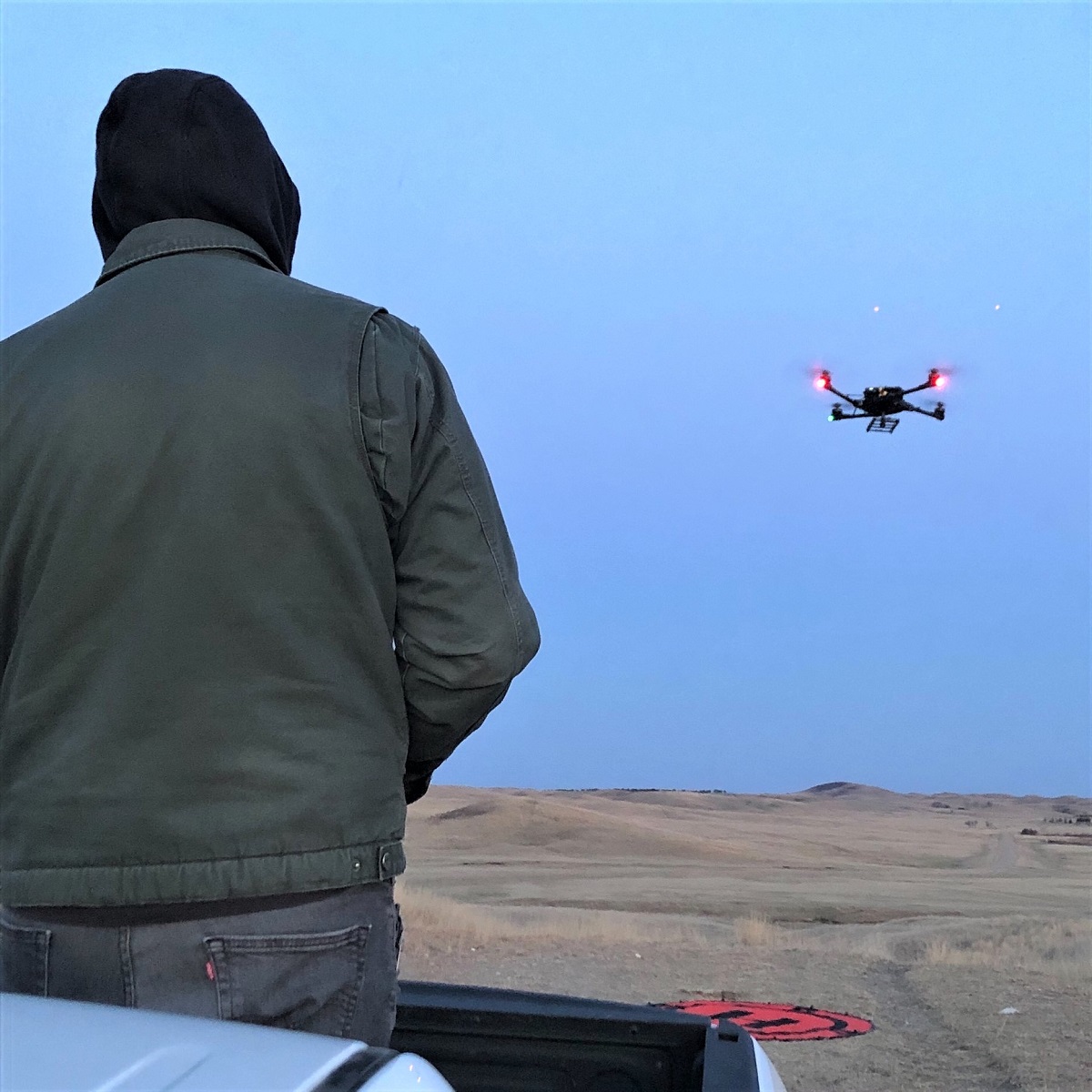
An Alta X UAS pilot simulates an evening surveillance flight over the plains.
When it comes to real-life surveillance operations, UAS can be used by both federal agents and bad actors to gather photographic and topographical data and relay this valuable information to pilots and operators on the ground. S&T evaluated the potential use of UAS as a critical tool for securing and defending the plains regions from drug runners or human traffickers that traverse these areas by foot to cross into the U.S.
While the Camp Grafton ADA demonstrations are over, there is still much more work to do. The data collected and analyzed from these tests will provide a baseline of information about the selected tools and their capabilities and limitations when it comes to detecting aircrafts in the field. The data will soon be used to inform the upcoming ADA demonstrations in Limestone Hills, Montana (mountainous terrain), where the complex topographies and landscapes will pose significantly greater challenges for these surveillance systems and the operators using them.
Upon completion, S&T will share detailed test reports with federal agencies, organizations, and stakeholders looking to procure and implement ADA technologies at the northern border and other key points of entry around the country.
“With the testing and results from Camp Grafton, we now have a great baseline to compare the systems in more difficult environments and terrains like the mountains of Montana,” explained Bennett.

